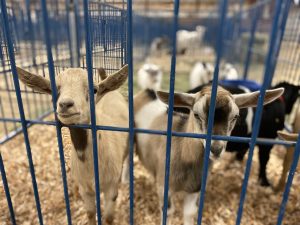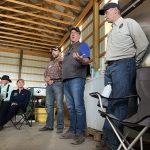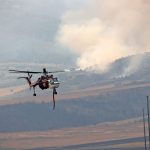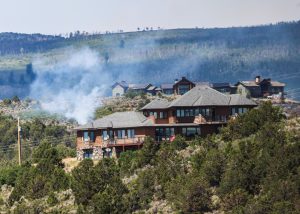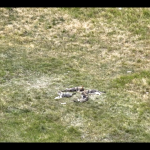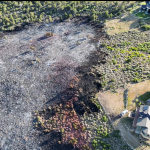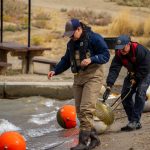Ranchers helping ranchers with livestock evacuations near Meeker
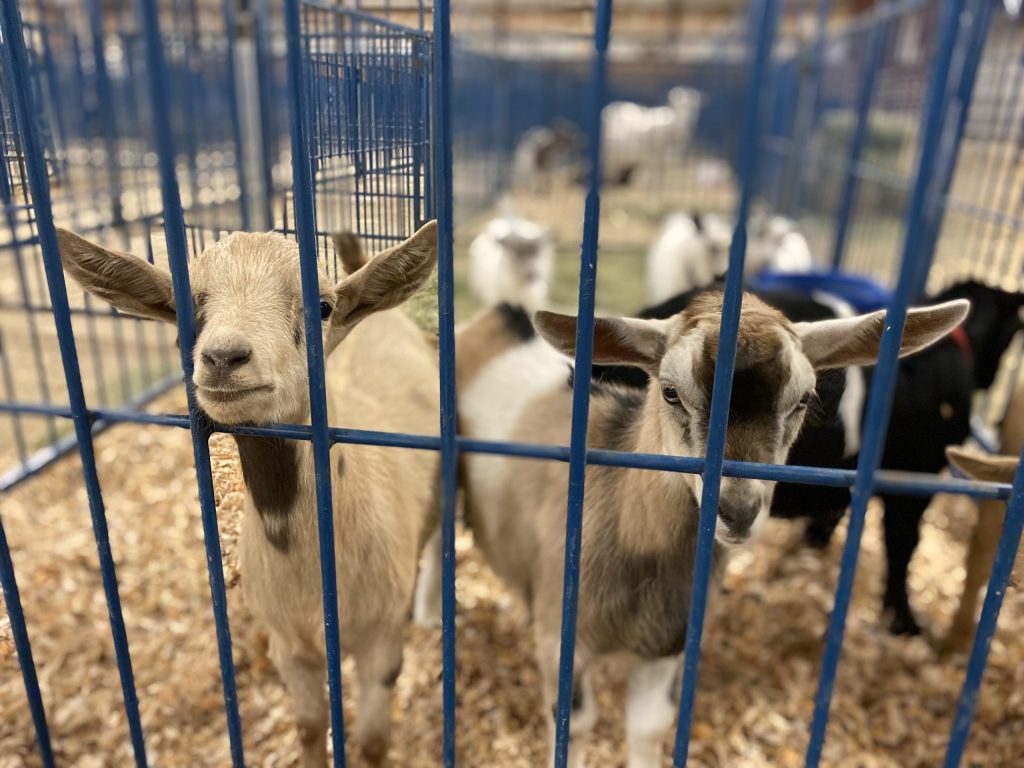
Rocky Mountain Complex Incident Management Team/Courtesy photo
Neighbors are helping neighbors, and ranchers are helping other ranchers to evacuate livestock, especially southwest of Meeker, as the Lee Fire grew to an estimated 45,000 acres by Thursday morning.
“We need all the help we can get, and we need all the prayers we can get,” said Rio Blanco County Woolgrowers Association member Shawna Eubanks, who lives 5 miles west of Meeker. “That’s kind of what we do in the ranching community, neighbors help neighbors and fellow ranchers help fellow ranchers.”
Woolgrowers Association President Butch Theos helped his cousin, Renae Neilsen, move 200 sheep on Tuesday out of wildfire danger. That required the sheep to be penned and loaded into four double-deck, 20-foot livestock trailers and moved to a lot in Meeker. But on Wednesday, with wildfire danger rising for the town, the 200 sheep needed to be trailered and moved again to irrigated pasture land east of Meeker.
With her property in a yellow pre-evacuation area, Eubanks said her cousins from Rangely, located some 55 miles west of Meeker, traveled Wednesday to transport her 30 head of goats with two pickups pulling horse trailers.
Eubanks said her brother-in-law, a semi-truck driver, “has been hauling and gathering cattle” consistently for ranchers.
Rio Blanco ranchers contacted related instances where ranchers needed to cut fences to let herds of livestock move to remain safe from the wildfires.
“In Piceance Creek, they just cut fences and hope for the best for the cows; the fire came up so fast,” Eubanks said.
Kathy Nelson, president of the Rio Blanco Cattle Women association, explained, “There was a lot of cutting fences because they could not get them all out because it wasn’t possible to access the cattle for ranchers with cattle on the BLM permits in Piceance Creek.”
“It’s real hard to gather off those permits,” Nelson said of the grazing allotments on public lands.

Schelly Olson, an assistant in the Rio Blanco County emergency management office, said ranchers with grazing allotments are working directly with rangeland management specialist personnel from the Bureau of Land Management or U.S. Forest Service.
On the east side of Meeker, where the Elk Fire was reported at 14,250 acres by Thursday morning, ranchers were moving livestock to irrigated acres and closer to land near the White River.
“I know a lot of ranchers have evacuated cattle and brought them to irrigated lands, by trailers mostly,” Nelson said.
Nelson said her family’s ranch, located 4 miles east of Meeker, has some 200 mostly Simmental-Angus cross cattle, multiple 4-H show steers, 80 goats and 50 sheep. The family has a plan with a trailer ready next to their barn to load some 30 young goats and sheep, along with their pets and guard dogs, to evacuate if necessary. The remainder of their livestock would stay in place on the irrigated pastureland, she said.
“The people along the White River east of Meeker in the lower lands are keeping cattle in irrigated pastures because that seems to be the safest place to put them right now, because it’s really hard to evacuate full large herds,” Nelson said. “I’m getting texts and messages from my friends all over Colorado offering spaces to put animals, but it’s just a matter of being able to get a large amount of animals to the places that are being offered.”
Beyond friend, family and neighbor assistance as well as official emergency management connections to resources through the Rio Blanco Sheriff’s Office, some residents are offering help and connecting with others through the “Meeker Colorado, Message Board” on Facebook.
The official evacuation shelter for small animals or livestock is the Rio Blanco County Fairgrounds, where Manager Nick Smith was busy nonstop on Thursday with meetings and setting up pens. By Thursday afternoon, the shelter housed 108 evacuated animals, including horses, llamas, goats, chickens, turkeys, pigs, sheep, cattle and donkeys, Smith said.
The fairgrounds are also serving as the Incident Command Post for firefighter operations, so animals are in the care of the fairgrounds and CSU Extension staff for feeding and watering. Space is still available there for evacuated animals.
Meeker native Betty Kracht, who lives three miles south of Meeker east of Colorado Highway 13, was at home “on edge” early Thursday afternoon as she watched a large smoke plume in the distance. On Wednesday, a horse and three mules staying at their property were evacuated. Their neighbors opened gates in pastures to let cattle move freely from the heat of fires if needed, Kracht said.
Kracht said her family moved their camper to a safe area on Wednesday so they would have a place to stay if evacuated. By Thursday afternoon, with their property in the red evacuation zone, the family had gathered their two dogs and four cats. They planned to turn out their chickens if they evacuated.
“I wish the wind would stop,” Kracht said. “We are sitting, waiting and watching.”
“It’s super dry. It’s the perfect storm of dry lighting, dry conditions and wind,” Kracht said. “It’s ugly.”
Wildfire in Missouri Heights prompts evacuations, burns 115 acres as of Sunday night
A wildfire broke out Sunday near Missouri Heights that prompted temporary evacuations and burned an estimated 115 acres, although no injuries or major structural damage were reported.
